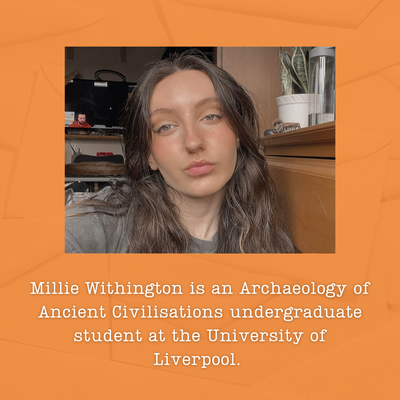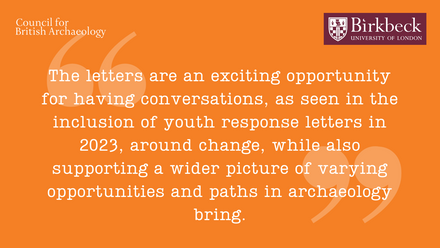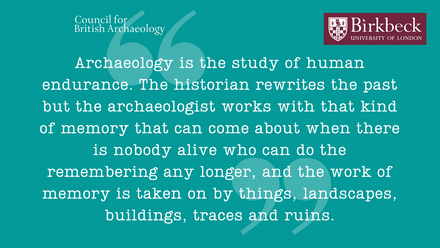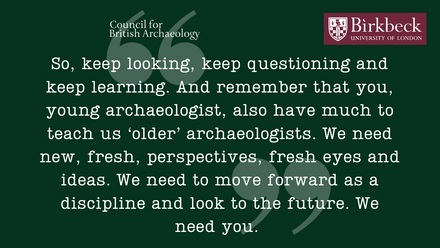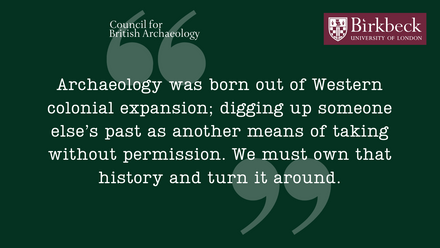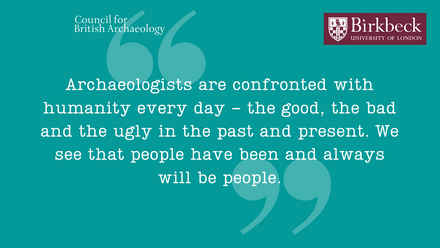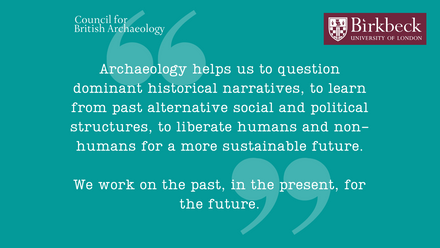Letter to a Young Archaeologist October 2023
Dear Young Archaeologist,
I work for the Clwyd-Powys Archaeological Trust, an organisation based in mid-Wales. We are one of four Welsh Archaeological Trusts that were established in the 1970’s, the focus of our work being to educate the public in archaeology. We work closely with other national, regional and local organisations to help conserve, understand and promote all aspects of the historic environment in Wales.
Within our own Trust there are lots of different roles and all of them require a broad range of skills. A lot of archaeological work today is driven by commercial development, like building new housing estates or retail parks, and within our team we have archaeologists who work alongside the local authorities (your local council) to ensure that archaeology is considered in all new planning applications. Our planning archaeologists consult lots of resources to check if a development might impact any archaeology and if necessary, they will recommend that archaeological work is undertaken before or as a condition of planning permission. This is where a lot of new archaeological discoveries are made and it is archaeological contractors like our own field services team who undertake this work out in the field. Archaeologists are working in development lead archaeology across the UK every day and in our own Trust, this had led to some amazing discoveries, including a large Neolithic settlement, Bronze Age burial sites, a Roman town, and even a buried water wheel that was part of an old forge!
Before any excavation takes place though, our field team always undertake desk-based research for each site, like consulting old maps, aerial photography or archaeological reports. They might also use electronic equipment to survey a development site and map any potential buried archaeology. This can help to inform the evaluation process of a site, and if a survey shows potential buried archaeology, they will then excavate a series of trenches to assess whether those features are archaeological or not. They also sometimes watch other contractors excavate holes in the ground with a machine or by hand. This is known as a watching brief, and any archaeology that is discovered is recorded by descriptive notes, drawings and photography. Other times, our field team might be out and about recording an old barn or farmhouse that is planned for renovation.
All the field work we undertake requires ‘post excavation work’ and this is the work our team do back at our offices. This means writing up all the sites they work on into a report and making sure all the site records are in order and ready to archive. All the photographs must be catalogued and if they discover any artefacts, these are washed, and catalogued and really important finds might be sent off to specialists for examination. Part of my job is to send all the data our team gather to an archive. For Wales this is the Royal Commission on the Ancient and Historical Monuments of Wales (RCAHMW), and they look after both digital and paper archaeological records. Any significant artefacts we find are deposited with the local museum who have the correct resources to manage the artefacts in a stable way for long term preservation. Archiving our projects means they are accessible to future generations of archaeologists or researchers (like you)!
Clwyd-Powys Archaeological Trust have also undertaken large scale projects on behalf of Cadw, working closely with the other Welsh Archaeological Trusts in Dyfed, Gwynedd and Glamorgan-Gwent. This has allowed us to gather data across the whole of Wales about Prehistoric funerary and ritual sites, Roman roads and traditional farm buildings to name a few! More recently we have worked on a project with the other Trusts to look at the archaeology of rivers. This has been driven largely by climate change and the increase in flooding events, which can cause irreversible damage to archaeology along rivers. This recent project has created a data set of sites along our rivers so that we have a better idea as to what exists and how repeated flooding events might impact them.
All the discoveries made by archaeologists get added to the Historic Environment Record (HER) – which for the Clwyd-Powys region is a database of over 180,000 records of archaeological sites and projects. We have two archaeologists within our Trust who manage this huge dataset and we get sent details of new archaeological work that has been undertaken in our region almost every day! One of my jobs is to add this data to the HER, making new records and adding archaeological reports and photographs to the dataset. We are always working to improve our records and all the data we add helps to inform the planning archaeologists, other archaeological contractors, external organisations, researchers and members of the public who are interested in archaeology. Data within the Historic Environment Record for Wales is available online at Archwilio.org.uk where you can search for sites of interest or see what is recorded within a specific area. It can be a great tool if you are doing a research project for school or college too!
Our Heritage Management archaeologists provide advice to landowners, which could be a farmer, or a much bigger organisation like Natural Resources Wales. Sometimes, farming practices, or things like tree planting can damage archaeology, so our Heritage Management archaeologists check to see if any proposed works could impact the archaeology and they will advise the landowners to make sure they know where the archaeology is and how to manage it.
We often think of archaeology as being just about digging, but you can see from all the things mentioned above it can be much more than that! At the start of this letter, I outlined the core of the Trust’s work – which is to educate the public in archaeology, and this can be one of the most rewarding aspects of our work. Our team often give talks about the work we do to local interest groups, we visit schools to inspire pupils about archaeology, we attend events to showcase our work, we run workshops to allow people to develop their knowledge of archaeology and we often work with other organisations like the National Trust where anyone interested in archaeology can come and work alongside our team excavating some of the National Trusts amazing properties.
What I wanted to highlight to you really – in a rather roundabout way - is that archaeology as a career has a huge range of opportunities within it and even working in just one area requires a lot of different skills. All of the work we do adds to our knowledge and understanding of the archaeology and history of Wales and as every site we deal with is different, there is the opportunity to learn something new every day!
Sophie Edwards
Clwyd-Powys Archaeological Trust
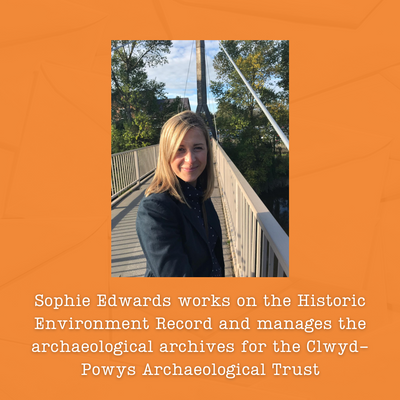
Dear Clwyd-Powys Archaeological Trust,
I am a 3rd-year Archaeology student at the University of Cambridge, and I plan to pursue a career in heritage or museum/curatorial work. I am particularly interested in public engagement within archaeology and how learning about the past can bring people together.
It was great to get some experience working with CPAT this summer. As I am not super into digging, there was a wide variety of other jobs I could get involved with over my 2 weeks.
After a difficult 2nd year at university, I felt overwhelmed with constant deadlines and a lot of focus on dense archaeological theory (which hurt my brain a bit!). I was worried that a future in archaeology wasn't for me. Throughout my degree, I've learned that essay writing is not my favourite thing and that a future in academia didn't suit my interests. I realised that I am interested in public engagement, museum curation and heritage management: working with the past but with a direct link to the present. My work with CPAT over the summer helped me realise there is a place within archaeological careers for loads of different interests, confirming my choice to pursue museum curation and heritage in the future.
I recommend other young people interested in archaeology to try as many opportunities as possible, send loads of emails, get as much experience as possible to build their skills and find what aspect of archaeology they can see themselves in. Especially if you are around my age and feeling a bit stuck on what to do post-graduation, getting experience and chatting to people about how they got into their jobs, what they like about it, and just building up as much information as you can really helps!
Some highlights were working on a geophysics survey of the Great Lawn at Powis Castle using magnetometry. CPAT aimed to map out certain features of the buried Edwardian water garden ahead of the excavation. This was a really cool experience, and it was so interesting to see the results afterwards; the survey matched up with early watercolours of the garden before it was buried in the Victorian period. The water fountains were clearly visible and matched the shape on the drawings. I also helped with the excavation of 2 trenches in the gardens. Although we didn't find much, getting more practical experience was great. I enjoyed getting to know the field archaeologists and hearing about their experiences in the role while digging and during our lunch breaks (and being harassed by Powis Castle’s rogue peacock for some crumbs!)
I also worked on some of the finds processing and post-excavation from a recent dig at Chirk Castle. I tried to superglue different parts of pots and other vessels together like a 3D puzzle! I learnt about types of Georgian pottery and how it was made, including thicker salt glaze bowls, which were used for cooking and food preparation/storage, compared to finer china plates and cups for serving food. Matching up different designs and patterns of the china was also interesting, as I could be hands-on with the finds. When digging, you don't always get a chance to handle, sit with finds, think about how they were made and used, and get a tangible sense of the past as you do in post-excavation. The assemblage excavated at Chirk revealed how piles of rubbish people threw away in the past are often the most interesting!
We worked on processing finds with other volunteers at a stall at Powis Castle as part of the Festival of Archaeology, which meant lots of members of the public passing by for a cuppa in the café came to have a look at what we were doing and share their thoughts on some of the objects, and their experience with archaeology. I found this really rewarding because you could see the public's interest. It was great to learn about their experiences, like calling the archaeologists after finding a horse skeleton while extending their house! We also shared information from the excavation with them and answered any questions.
One day, I worked with Zoe, the Heritage Officer, for a public outreach day supported by the Festival of Archaeology. We hosted two workshops with the local Women's Institute and Ponthafren, a local men's mental health group. These workshops focused on how local groups could creatively engage with archaeology as part of the Festival of Archaeology. This was successful, chatting about local archaeology, family histories and their daily experiences with the past. At the same time, we came up with creative ideas for their projects, such as a cardboard hillfort and clay pots. Working with the local community and discussing how archaeology could help them recruit members or encourage community interaction was really rewarding. Ponthafren suggested mental health walks between some archaeological features in the local landscape, like hillforts, which I found inspiring, to prove that archaeology and learning about the past can help people in the present, encouraging their mental well-being.
Overall, I would recommend young people get involved with CPAT or look into what they do to get ideas for future jobs or volunteering opportunities. My work with them broadened my ideas of what a career in archaeology and heritage can look like, and I found it really rewarding.
Emily Wynne
Archaeology Student
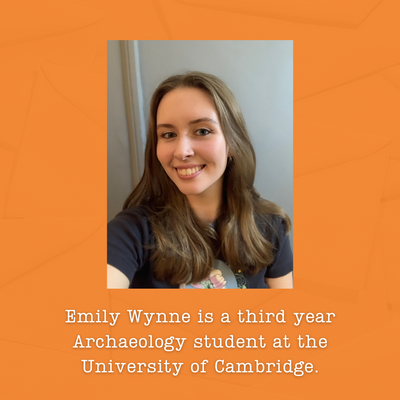
Dear Clwyd-Powys Archaeological Trust,
It's exciting to learn about the many different roles and skills involved in archaeology, especially when it can seem at first that all archaeology entails is field work. This is why I’m glad there is an organisation like Clwyd-Powys Archaeological Trust, which is so involved in broadening the community’s understanding of the career.
For people like me, who struggle with mobility issues, archaeology may seem like a daunting and ill-fitting career path. However, after spending a week volunteering with the Heritage Management Team at Clwyd-Powys Archaeological Trust, it’s great to know that there are positions within the field of archaeology that are perfect for people who would prefer to specialise in the office/lab-based processes of archaeology. That being said, I encourage everyone to take the opportunity to experience field archaeology if you get the chance, even if it's just a small taste. You never know; it might spark a new passion or open up a new career path for you!
Sincerely,
Millie Withington
Archaeology of Ancient Civilisations undergraduate student at the University of Liverpool.
